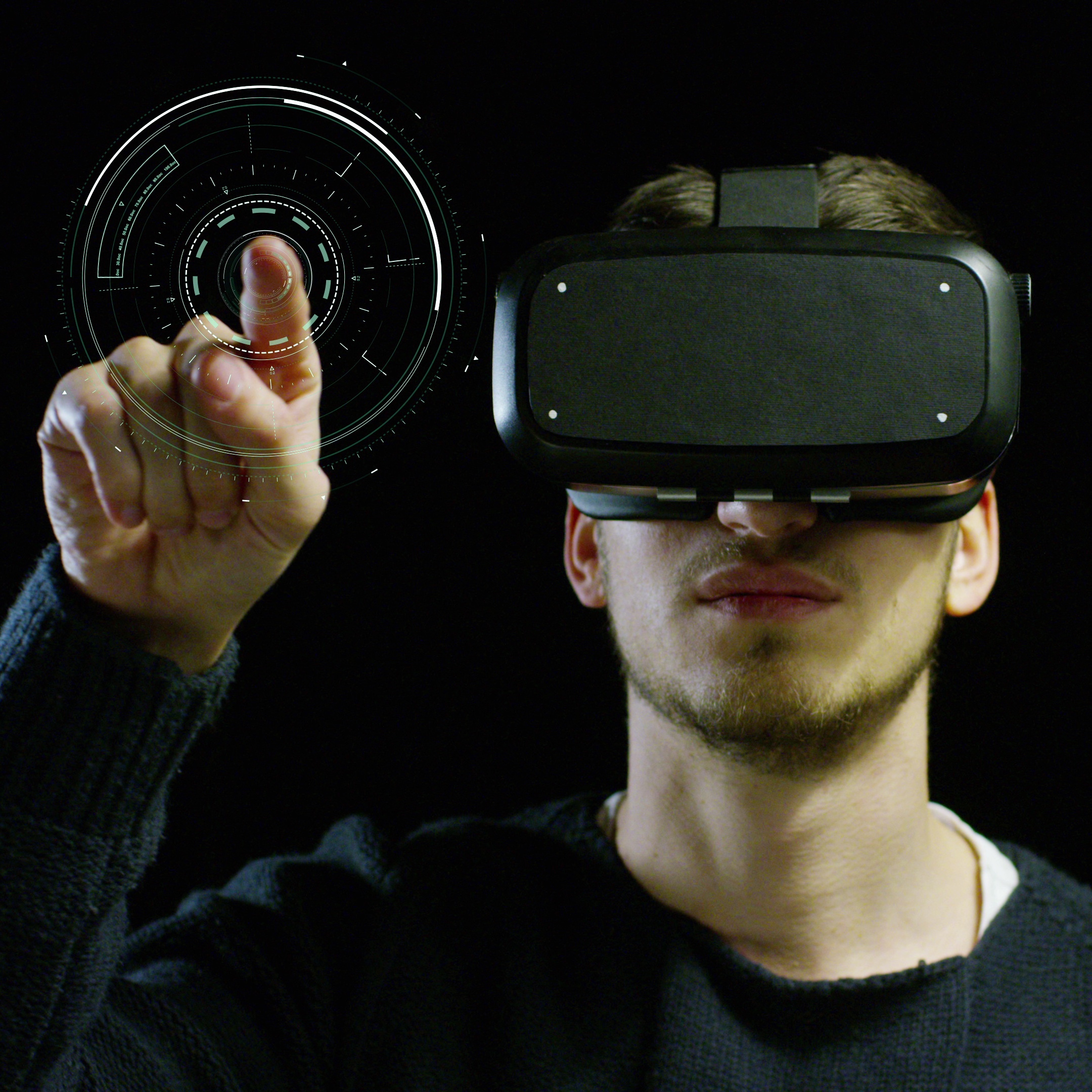8 Top AI Trends That Will Transform the Way We Work (And Win) In 2024
AI has entered every sector, making it safe to say that it’s more than just a buzzword in the business world.
As team AI’s default representative,ChatGPT usage figures symbolize the widespread uptake and reliance on AI. ChatGPT currently has around 180.5 million users. The website generated 1.6 billion visits in January 2024. According to OpenAI chief Sam Altman, 100 million users flock to the generative AI platform weekly.
Generative AI is just one part of the larger AI picture. AI can impact a business, its processes, people, and profitability in countless ways. Moreover,22% of companies are aggressively pursuing the integration of AI across a wide variety of technology products and business workflows. 33% of firms are engaging in limited implementation of AI. And less than half, i.e., 45% of firms, are in the exploration phase.
The upcoming wave of generative AI technologies will surpass now-familiar chatbots and image-generation tools that made headlines (and memes) in 2023. Already, platforms for generating videos and music are beginning to surface, and these are set to become smarter, faster, and more intuitive in true AI spirit. This year, we’re likely to witness the integration of new generative AI into creative and productivity tools, mirroring the trajectory of ChatGPT technology.
Top AI trends for 2024
- Generative AI in product design
Just like ChatGPT did with content and various graphic design tools (like Adobe Sensei) do with graphic design, generative design tools can automate portions of a product design process, improving productivity by leaps and bounds. As AI design tools become increasingly intelligent, they will even be able to suggest design treatments and enhancements, thus enabling improved efficiency in output. Meanwhile, effective testing and design prototyping can be conducted with more incredible speed and cost-efficiency, which eventually translates to reduced go-to-market timelines. Considering this, we can expect AI in product design to be a big trend in 2024.
Aircraft manufacturer Airbus used generative AI to developa wingtip that would increase fuel efficiency by 3.5% by improving the aircraft’s “lift and drag.” Airbus is also applying generative AI design tools to make lighter, more fuel-efficient planes.
- Generative AI in healthcare
According to Markets & Markets, the global AI in Healthcare market size was valued at USD 20.9 billion in 2024 and is estimated to reach USD 148.4 billion by 2029, registering a CAGR of 48.1%. AI is expected to be a massive trend in healthcare in 2024 because of its countless use cases, from easing administrative workflows to improving on-ground care and reducing dosage errors with virtual nursing assistants. AI can also support doctors and enable more accurate diagnosis. Even as early as 2018, AI was found to be capable of diagnosing skin cancer after being trained on images of malignant melanomas, or the most severe form of skin cancer. Moreover, it was proven to perform better than 58 dermatologists from various parts of the world.
- AI + quantum computing
Quantum computing empowers AI systems to work at a speed beyond the capabilities of traditional computers. This gives them the ability to process massive datasets and execute complex models. Companies like Amazon Web Services,Google, and Microsoft are working behind the scenes to tap into advancements in quantum computing and develop tools that rely on it. According to AWS, a pay-as-you-go managed service called Amazon Braket has been used by Volkswagen to “evaluate the performance of their quantum algorithm for their binary paint shop problem”.
Meanwhile, Forbes reported two exciting applications of the combined forces of AI and quantum computing (dubbed QAI) in action:
A partnership between QAI frontrunner, IonQ, and Hyundai will see the automobile manufacturer use QAI to help autonomous vehicles read and understand road signage and to generally improve object classification and object detection in these cars of the future. Google is tapping into the QAI space with TensorFlow Quantum (TFQ), which is used to prototype hybrid quantum-classical AI models.
As of 2024, the quantum computing market is valued at USD 1.3 billion and is projected to reach USD 5.3 billion by 2029, with a compound annual growth rate (CAGR) of 32.7% during the forecast period. It is safe to say that quantum computing is going to be a big AI trend for 2024 and beyond!
- AI in Market Research & Data Analytics
Businesses today are all about becoming data-first, leveraging data for various optimizations. But gathering data in bulk also means sifting through it in bulk and drawing actionable insights from a sea of otherwise meaningless numbers. With AI, data scientists will be able to draw insights with incredible speed and efficiency. On the other hand, without augmented intelligence, the process would take years. In the meantime, the data would become redundant before it can be mined for insights. Additionally, the volume of data would also make it more likely for some trends, patterns, and insights to go unnoticed. As a result, the utilization of AI in data analytics is expected to become a trend in 2024, only developing more steam in the years to come.
According to McKinsey & Company, “A consumer packaged goods company augmented its market and user research with new insights using generative AI tools about consumer sentiment and how it might use its brand equity to expand into high-growth markets. With this knowledge, the design team broadened the scope of its ethnographic interviews, gaining feedback on important design elements that informed its subsequent work to develop and refine new concepts.”
- Augmentative AI in manufacturing
Augmentative AI has emerged as a burgeoning trend, and two attributes characterize it:
1) Seamless integration into the working environment of individuals or teams, and
2) Assistive functionality, aimed at either regulating variables or providing informative cues to the worker.
This assistance improves worker performance, specifically in terms of speed, safety, and/or accuracy, to optimize overall efficiency.
The most common use case for augmentative AI is in manufacturing, where workers can utilize AR-enabled headsets that relay information relevant to the task at hand. Here, AI steps in to contextualize overlaid information to the task at hand. A Brisa Bridgestone tyre manufacturing facility in Turkey has been using AR smart glasses for training and product inspection. In one experiment, of 51 rejected tyres reinspected with the intelligent AR glasses, 22 were actually found to be usable.
In other use-cases of augmentative AI, IoT sensors and AI combine forces to monitor working conditions and alert workers to any hazards or risks. A company called OpenSensors, for example, creates technology that can oversee air quality and various environmental conditions in workspaces.
- Sustainability with AI
There’s no context in which sustainability isn’t a trending talking point in 2024, and AI in sustainability is no exception. Companies, including Apple, are making headlines with carbon neutrality goals and zero–emissions commitments. Manufacturers are pursuing concepts like circular economy, consumers are lapping up electric vehicles, construction companies are looking for greener ways to build, and the world is embracing solar and conscious consumption.
However, with such immense power comes equally tremendous responsibility, and to top everything, AI has a growing reputation for being detrimental to the environment. This is because the volume of water needed to cool a supercomputer as it undergoes training (the training that makes AI systems intelligent) is tremendous, estimated at 6000 gallons per minute. Meanwhile, a supercomputer’s missions are often equated to that of several automobiles.
So, how can AI offset its carbon-related sins? Well, it can foster sustainability in various sectors by helping decision-makers uncover more sustainable ways of doing things. IBM utilized artificial intelligence to scrutinize its supply chain data and pinpoint opportunities to reduce its carbon footprint. After a thorough examination of supplier data, transportation behavior, and energy utilization, IBM was able to streamline logistics routes to achieve a noteworthy 12% decrease in carbon emissions.
AI can be an enabler of sustainability in other ways, too: AI tools combined with IoT devices can conduct climate assessments and safeguard crops and vital infrastructure before natural disasters or an early monsoon. Meanwhile, predictive AI can achieve the following sustainability-linked goals:
- Project future emissions and air pollution levels based on existing data and trends, helping governments and legislators make course corrections today.
- Harness data from sensors, drones, and satellite imagery to track and forecast the effects of deforestation over time.
A study considering the potential for AI and ML in this area can be referenced here.
- AI-enabled cybersecurity
Worldwide cybercrime costs are estimated to reach $10.5 trillion annually by 2025. With hackers tapping into AI for deepfake-enabled crimes and other types of cyberattacks, cybersecurity professionals need to develop a security arsenal that “fights fire with fire.” Today’s IT security teams need to not only fortify systems from attacks but also develop processes and measures that maintain business continuity in the face of attacks. Think automated defense lines and compliance management bolstered with AI. Cybersecurity teams are sure to derive significant value from this AI trend for 2024.
There are many companies using AI to enhance the efficiency of cybersecurity solutions. One example is the cybersecurity analytics solution Cybereason, which leverages AI-driven threat monitoring to detect and assess whether an organization is under attack. Other names in this space include Telesign, Framework Security, Coro, LogRhythm, and Tessian.
- AI-enabled personalization
The Internet of Behaviour (IoB) merges data analytics with human behavior science. It uses AI, machine learning, and predictive analytics to develop personalized experiences for use cases in healthcare, education, marketing, and advertising.
For example, IoB monitors behavior and health for personalized healthcare plans. Similarly, it analyzes customer behavior for better marketing and a better user experience. This pivotal technology connects data and human behavior innovatively, appealing to healthcare professionals, marketers, and trend enthusiasts.
We experience AI’s role in personalization in our daily lives. That obscure show Netflix recommended to you that thrilled you to bits? That was the OTT platform’s AI-enabled recommendation engine at work. The AI knows what you watch, how long you stay tuned, and what you drop before getting through the first episode; that’s how it gets it right nearly every time. Netflix claims that over 75% of what people watch is discovered through the recommendation system.
AI—a force to be reckoned with harnessed
AI holds the keys not only to future success but also to immediate business competitiveness, cost-effectiveness, and relevance. According to researcherCompTIA, “Hesitation in adoption may stem from challenges like the cost of upgrading applications, the cost of building out infrastructure, or the need to fully understand the data needed to train AI properly.”
However, some partnerships might help businesses overcome these teething problems and gradually harness the power of AI. Companies can sample AI in smaller projects or beta test it in one department, a single system, or a single location before they invest heavily. At magineu, we can help you identify use cases for AI in your unique ecosystem.
Are you ready to ride the rising AI wave in 2024 and onward? How many of these AI trends for 2024 sound exciting to your role and business?



